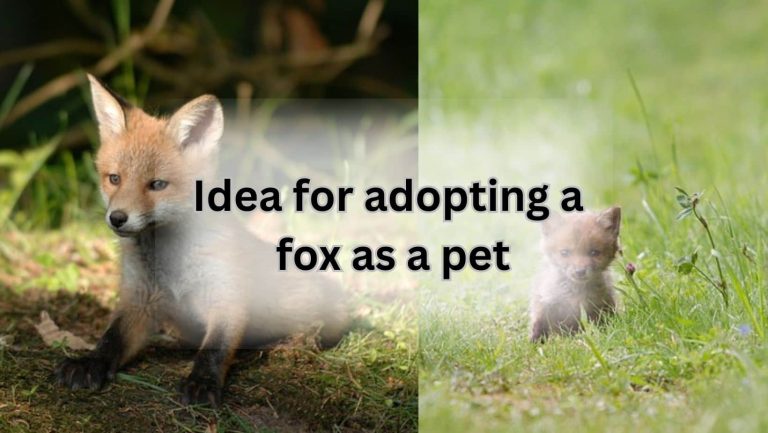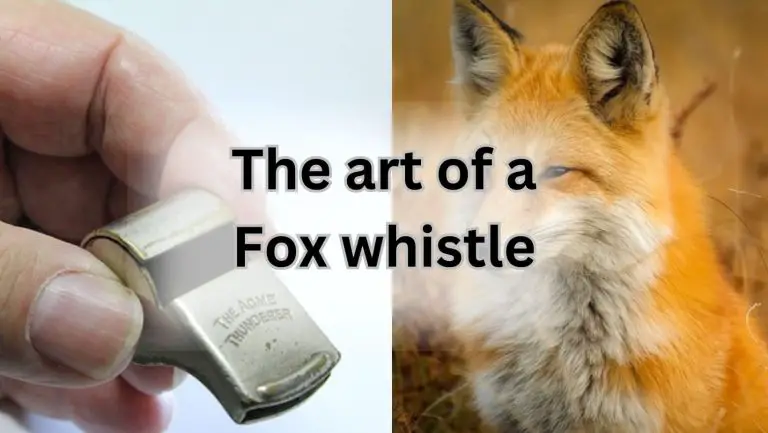Discover: Foxes’ Secret Weapon – How Many Teeth They Have!

Overview of Foxes’ Dental Structure
How many teeth do foxes have? Foxes typically have 42 teeth in total, which consist of incisors, canines, premolars, and molars. Let’s delve deeper into the dental anatomy of these fascinating creatures and explore the functions and importance of their teeth.
Types of Teeth in Foxes
Ever wondered why foxes have such sharp teeth? Well, it’s because they are carnivorous animals that need these specialized teeth for hunting and tearing apart their prey. Their incisors are used for cutting, the canines for puncturing and holding onto their food, while the premolars and molars are for crushing and grinding.
Did you know that foxes have a dental formula of 3/3, 1/1, 4/4, 2/3? This means they have three incisors, one canine, four premolars, and two molars on each side of their upper and lower jaws. These teeth are essential for their survival in the wild, allowing them to efficiently consume their prey.
Function of Foxes’ Teeth
Have you ever observed a fox using its teeth to catch its prey? Their sharp canines play a crucial role in capturing and killing small animals like rodents, birds, and insects. The molars are vital for chewing and breaking down food into smaller pieces, aiding in the digestion process.
Furthermore, foxes’ teeth are also essential for grooming and maintaining their fur. They use their incisors to clean themselves, removing dirt and parasites from their coats. This grooming behavior not only keeps them clean but also helps in regulating their body temperature.
Importance of Dental Health in Foxes
Just like humans, foxes need to take care of their dental health to ensure their teeth remain strong and healthy. Poor dental hygiene can lead to various dental issues such as tooth decay, gum disease, and infections, which can significantly impact their overall well-being.
It is crucial for foxes to have a balanced diet that includes foods that promote good dental health, such as raw meat and bones. Chewing on bones helps keep their teeth clean and prevents tartar buildup. Additionally, regular veterinary check-ups are essential to monitor the condition of their teeth and address any dental problems promptly.
By understanding the dental structure, function, and importance of dental health in foxes, we can appreciate these remarkable animals even more. So, next time you see a fox, take a moment to admire their impressive teeth and the vital role they play in their survival in the wild.
2. Foxes’ Adult Teeth Count
Determining the Number of Adult Teeth in Foxes
Ever wondered how many teeth a fox has? Well, let me enlighten you on this fascinating topic. Adult foxes typically have a total of 42 teeth in their mouth. These teeth are essential for their survival in the wild, helping them hunt, chew, and defend themselves.
Variations in Adult Teeth Count Among Fox Species
Do all fox species have the same number of teeth? The answer might surprise you. While most fox species have 42 teeth, there can be slight variations among different species. For example, the Arctic fox may have a slightly different tooth count compared to the red fox. These variations are fascinating and highlight the diversity within the fox family.
Factors Affecting Adult Teeth Count in Foxes
What factors can influence the number of teeth in a fox? Well, genetics play a significant role in determining the tooth count of a fox. Additionally, age can also impact the number of teeth, as young foxes may have fewer teeth than adult ones. Dental health and diet can also play a part in the condition of a fox’s teeth.
So, next time you come across a fox, take a moment to appreciate the impressive dental structure that helps these magnificent creatures thrive in their natural habitat. Foxes are truly remarkable animals, and their teeth are just one of the many intriguing aspects of their biology.
Foxes’ Baby Teeth Count
Development of Baby Teeth in Foxes
Ever wondered about the adorable baby teeth of foxes? Well, let me enlighten you on this fascinating topic! Foxes, like many mammals, are born with a set of baby teeth, also known as deciduous teeth. These baby teeth start to emerge when the fox cubs are just a few weeks old. The development of these teeth is crucial for the young foxes as they start to explore the world around them and eventually transition to their adult teeth.
Shedding of Baby Teeth in Foxes
Now, let’s talk about the shedding process of these tiny teeth in foxes. As the fox cubs grow, their baby teeth start to loosen and fall out, making way for the permanent adult teeth to come in. This shedding process is essential for the foxes’ dental health, ensuring that their adult teeth grow in properly and function effectively for hunting and eating.
Comparison of Baby Teeth Count to Adult Teeth Count in Foxes
So, how many teeth do foxes actually have? Well, foxes typically have around 28 baby teeth, which include incisors, canines, and premolars. As these baby teeth are shed, they are replaced by a set of 42 adult teeth, which consist of incisors, canines, premolars, and molars. This increase in tooth count is necessary for the foxes’ dietary needs and hunting habits as they mature into adults.
As a Canid Wild Life Lover with 20 years of experience, I have witnessed firsthand the beauty of fox dental anatomy and the importance of dental care for these magnificent creatures. Understanding the development and shedding of baby teeth in foxes provides valuable insights into their growth and overall well-being. Next time you see a fox, take a moment to appreciate their dental structure and the intricate process of tooth development they undergo.
Dental Adaptations in Foxes
Evolutionary Changes in Foxes’ Teeth
Did you know that foxes have a unique dental structure that has evolved over time to suit their hunting and feeding habits? Foxes typically have 42 teeth, which include sharp canines for catching and killing prey, as well as molars for grinding food. These teeth are essential for their survival in the wild, allowing them to efficiently consume a variety of foods ranging from small mammals to insects.
Relationship Between Diet and Dental Adaptations in Foxes
Have you ever wondered why foxes have such diverse teeth compared to other animals? The dental adaptations in foxes are closely linked to their diet. As omnivores, foxes consume a wide range of foods, including fruits, vegetables, small mammals, birds, and insects. Their teeth are specialized to handle this varied diet, with sharp canines for tearing meat and strong molars for crushing plant matter.
Unique Features of Foxes’ Teeth for Survival
What makes foxes’ teeth so unique compared to other animals in the wild? One interesting feature of foxes’ dental structure is their ability to retract their claws, which helps them catch prey more effectively. Additionally, foxes have a dental formula that includes incisors, canines, premolars, and molars, each serving a specific purpose in their feeding behavior. These teeth are crucial for their survival, allowing them to adapt to different environments and food sources.
In conclusion, the dental adaptations in foxes play a vital role in their survival in the wild. Their specialized teeth are well-suited to their omnivorous diet and hunting habits, making them efficient predators in their natural habitat. Next time you see a fox, take a moment to appreciate the incredible dental adaptations that have evolved over millions of years to help these fascinating creatures thrive in the wild.
Dental Health Issues in Foxes
Common Dental Problems in Foxes
Have you ever wondered about the dental health of our foxy friends? Well, let’s dive into the world of fox dental anatomy! Foxes typically have a total of 42 teeth, including incisors, canines, premolars, and molars. Just like us, foxes can also face various dental issues, such as tooth decay, gum disease, and tooth fractures. These problems can be caused by poor diet, lack of dental care, or genetic factors.
Impact of Poor Dental Health on Foxes’ Overall Well-being
Did you know that dental health plays a crucial role in the overall well-being of foxes? Poor dental hygiene can lead to pain, discomfort, and difficulty in eating for these wild creatures. In severe cases, untreated dental problems can even affect their ability to hunt and survive in the wild. It’s essential to prioritize dental care to ensure the health and happiness of our furry fox friends.
Preventive Measures for Maintaining Foxes’ Dental Health
So, what can we do to help foxes maintain good dental health? One practical tip is to provide them with a balanced diet that includes foods that promote dental health, such as bones and raw meat. Additionally, regular dental check-ups by a veterinarian can help detect and address any dental issues early on. Remember, prevention is always better than cure when it comes to taking care of our foxy pals!
In conclusion, taking care of the dental health of foxes is essential for their overall well-being and quality of life. By being proactive and implementing preventive measures, we can ensure that these wild creatures continue to thrive in their natural habitat. So, let’s raise awareness about the importance of dental care for foxes and help them maintain healthy smiles for years to come!
Dental Anatomy
Structure of Foxes’ Incisors
Do you ever wonder how many teeth a fox has in its mouth? Well, let’s dive into the fascinating world of fox dental anatomy! Foxes typically have a total of 42 teeth, including incisors, canines, premolars, and molars. The incisors are the front teeth that help the fox to grip and tear its food. They play a crucial role in the fox’s ability to catch and eat its prey.
Function of Foxes’ Canines
Now, let’s talk about the canines – those sharp, pointy teeth that make foxes look so intimidating! Canines are essential for a fox’s hunting and defensive capabilities. With their long and sharp canines, foxes can easily puncture and hold onto their prey. These teeth are crucial for the fox’s survival in the wild.
Role of Foxes’ Molars in Chewing
Have you ever wondered how foxes chew their food with all those teeth? Well, the answer lies in their molars! The molars are the teeth located at the back of the fox’s mouth, and they are responsible for grinding and crushing the food. These teeth help the fox to break down its food into smaller pieces, making it easier to digest.
In conclusion, the dental anatomy of foxes is truly fascinating. With their array of teeth, foxes are well-equipped for survival in the wild. So, next time you see a fox, take a moment to appreciate their impressive dental structure!
Dental Care for Pet Foxes
Importance of Dental Check-ups for Pet Foxes
Ever wondered how many teeth a fox has? Well, let me tell you – a fox typically has around 42 teeth! Just like us, foxes need regular dental check-ups to ensure their oral health is in top-notch condition. But why are dental check-ups so important for our foxy friends? Let’s dive into it!
Brushing Techniques for Foxes’ Teeth
Do you brush your teeth twice a day? Well, your pet fox should have their teeth brushed too! But how do you brush a fox’s teeth? It may sound like a wild idea, but with the right technique and a bit of patience, you can keep your furry friend’s teeth sparkling clean.
Recommended Dental Treats for Foxes
Who doesn’t love a tasty treat? Just like us, foxes enjoy a good snack now and then. But did you know that there are dental treats specially designed to promote good oral health in foxes? These treats not only satisfy their taste buds but also help keep their teeth strong and healthy. So, next time you want to treat your fox, consider giving them a dental treat!
Remember, taking care of your pet fox’s dental health is essential for their overall well-being. So, don’t forget to schedule those regular dental check-ups, master the art of brushing their teeth, and treat them to some delicious dental treats. Your fox will thank you with a big, toothy grin!
Comparing Foxes’ Teeth to Other Carnivores
Differences in Teeth Structure Between Foxes and Wolves
Have you ever wondered how a fox’s teeth compare to those of a wolf? Well, let’s sink our teeth into this topic! Foxes typically have a total of 42 teeth, while wolves boast a set of 42 to 44 teeth. Despite the slight difference in numbers, both species have sharp teeth suited for tearing flesh and crushing bones. However, wolves have larger teeth overall, especially their canines, which they use for hunting and dominating their prey. In contrast, foxes rely more on agility and cunning to catch their meals.
Similarities in Teeth Function Between Foxes and Cats
Do foxes and cats share any similarities in their dental structure? Paws for a moment and think about it! Both foxes and cats are skilled hunters with sharp, pointed teeth designed for grasping and killing their prey. Foxes have carnassial teeth that help them slice through meat efficiently, much like cats. This adaptation allows them to thrive in their respective environments as stealthy predators.
Adaptations of Foxes’ Teeth for Hunting
How have foxes adapted their teeth for hunting success? Let’s uncover the secrets behind their dental prowess! Foxes have specialized teeth that enable them to catch a variety of prey, from insects to small mammals. Their sharp incisors help them grab onto food, while their molars aid in grinding and crushing it. Additionally, foxes’ long canines play a crucial role in puncturing and holding onto their prey, showcasing their hunting prowess in the wild.
So, the next time you spot a fox in the wild, take a moment to appreciate the incredible dental adaptations that help these cunning creatures thrive in their natural habitat. Remember, it’s not just about the number of teeth but how they are perfectly suited for survival in the wild. Foxes truly have a lot to sink their teeth into when it comes to hunting and thriving in the animal kingdom!
9. Foxes’ Teeth in Ecological Context
9.1 Impact of Teeth Count on Foxes’ Prey Selection
Have you ever wondered how many teeth a fox has and how it affects their hunting abilities? Well, let’s delve into the fascinating world of fox dental anatomy. Foxes typically have 42 teeth, including incisors, canines, premolars, and molars. These sharp teeth play a crucial role in the fox’s ability to hunt and consume a wide variety of prey, ranging from small rodents to birds and insects. The number and arrangement of their teeth enable foxes to effectively capture and devour their prey, contributing to their survival in the wild.
9.2 Role of Teeth in Foxes’ Ecosystem
How do a fox’s teeth contribute to the overall ecosystem? Foxes play a vital role in maintaining a balanced ecosystem by controlling the population of small mammals and insects. Their sharp teeth allow them to efficiently hunt and regulate the numbers of prey species, preventing overpopulation and ensuring the stability of the food chain. By preying on rodents and insects, foxes help maintain the ecological balance in their habitat, showcasing the significance of their dental structure in the ecosystem.
9.3 Behavioral Significance of Foxes’ Teeth in Communication
Did you know that a fox’s teeth are not only essential for hunting but also play a role in communication? Foxes use their teeth as a form of communication, displaying aggression or submission through their facial expressions and teeth-baring behavior. The size and condition of a fox’s teeth can indicate its age, health, and social status within the pack. By understanding the behavioral significance of foxes’ teeth, we gain insight into their complex social interactions and hierarchy within the ecosystem.
In conclusion, the number and condition of a fox’s teeth are critical factors that influence their survival, hunting abilities, and role in the ecosystem. By appreciating the intricate dental structure of foxes, we can better understand their behavior and significance in the natural world. So, next time you encounter a fox, take a moment to admire their impressive teeth and the important role they play in the wild.
Conservation Efforts for Foxes’ Dental Health
Threats to Foxes’ Dental Health in the Wild
Ever wondered what challenges foxes face when it comes to their dental health in the wild? Well, let’s dive into it! Foxes, like many other wild animals, can suffer from dental issues due to various factors such as poor nutrition, injuries, and infections. These threats can lead to tooth decay, gum disease, and even tooth loss, impacting their ability to hunt and survive in their natural habitat.
Conservation Programs Addressing Dental Issues in Foxes
Have you heard about the amazing conservation programs that are dedicated to improving the dental health of foxes? These initiatives play a crucial role in providing veterinary care, dental treatments, and monitoring the oral health of fox populations. By addressing dental issues early on, these programs help ensure the well-being and survival of these magnificent creatures.
Importance of Dental Health Awareness for Fox Conservation
Why is dental health awareness essential for the conservation of foxes? Just like humans, foxes rely on their teeth for hunting, eating, and overall survival. By spreading awareness about the importance of dental care for foxes, we can help prevent dental problems, improve their quality of life, and contribute to the preservation of these beautiful animals in the wild.
So, next time you see a fox, remember to appreciate their dental health and the efforts being made to protect it! Let’s continue to support conservation programs and raise awareness about the importance of dental care for our foxy friends. Together, we can ensure a brighter future for these incredible creatures.






